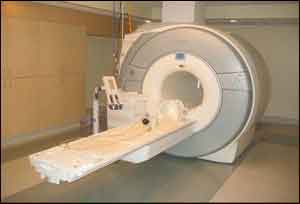- Home
- Editorial
- News
- Practice Guidelines
- Anesthesiology Guidelines
- Cancer Guidelines
- Cardiac Sciences Guidelines
- Critical Care Guidelines
- Dentistry Guidelines
- Dermatology Guidelines
- Diabetes and Endo Guidelines
- Diagnostics Guidelines
- ENT Guidelines
- Featured Practice Guidelines
- Gastroenterology Guidelines
- Geriatrics Guidelines
- Medicine Guidelines
- Nephrology Guidelines
- Neurosciences Guidelines
- Obs and Gynae Guidelines
- Ophthalmology Guidelines
- Orthopaedics Guidelines
- Paediatrics Guidelines
- Psychiatry Guidelines
- Pulmonology Guidelines
- Radiology Guidelines
- Surgery Guidelines
- Urology Guidelines
Do your patients really need that MRI !

Magnetic Resonance Imaging, or MRI, is one of the safest and most comfortable ways of looking inside the body. MRI uses a powerful magnet and radio waves, instead of x-rays, to create detailed images of your body’s soft tissue and organs. The images look like cross-sections of the body, and a technologist views a series of these images as they display on a computer screen.
But MRI ordering by doctors may often be based on factors other than actual medical need of patient ,researchers in UT Southwestern's Center for Patient-Centered Outcomes Research have found. Their study in JAMA Internal Medicine showed that a physician's prior image-ordering habits, as well as ownership of the equipment, were strong indicators of unnecessary imaging orders.
"Whether or not you get unnecessary imaging is partly explained by how much unnecessary imaging the clinician orders in general and whether or not the clinician owns the imaging equipment," said lead author Dr. Arthur Hong, Assistant Professor of Internal Medicine and Clinical Sciences at UT Southwestern Medical Center. "For patients who got an MRI but did not need one, which doctor they went to mattered more than the injury or symptom that they had. With people more on the hook for the costs of their care, it's increasingly important for physicians to offer financially responsible care."
Uncomplicated back pain and uncomplicated headaches are two of the most common reasons patients with health insurance received low-value, or unnecessary, imaging such as X-rays, computed tomography (CT), or magnetic resonance imaging (MRI). Previous studies have shown that this kind of wasteful care may account for up to one-third of all medical expenditures. In addition, low-value services can trigger downstream cascades of unnecessary care and clinical harm, said Dr. Hong, a Texas Health Resources Clinical Scholar.
The JAMA Internal Medicine study examined the records and characteristics of 100,977 primary care physicians, specialist physicians, and chiropractors in search of predictors for unnecessary back pain and headache image ordering. They found:
- Chiropractors and specialists were more frequent back pain imagers.
- Primary care physicians who ordered more back pain imaging also ordered more headache imaging.
Next steps for researchers include examining other nonclinical factors that continue to influence clinician practice habits, and ultimately exploring how to help patients and clinicians make better clinical decisions together.
For more details click on the following link: http://jamanetwork.com/journals/jamainternalmedicine/fullarticle/2653911

Disclaimer: This site is primarily intended for healthcare professionals. Any content/information on this website does not replace the advice of medical and/or health professionals and should not be construed as medical/diagnostic advice/endorsement or prescription. Use of this site is subject to our terms of use, privacy policy, advertisement policy. © 2020 Minerva Medical Treatment Pvt Ltd